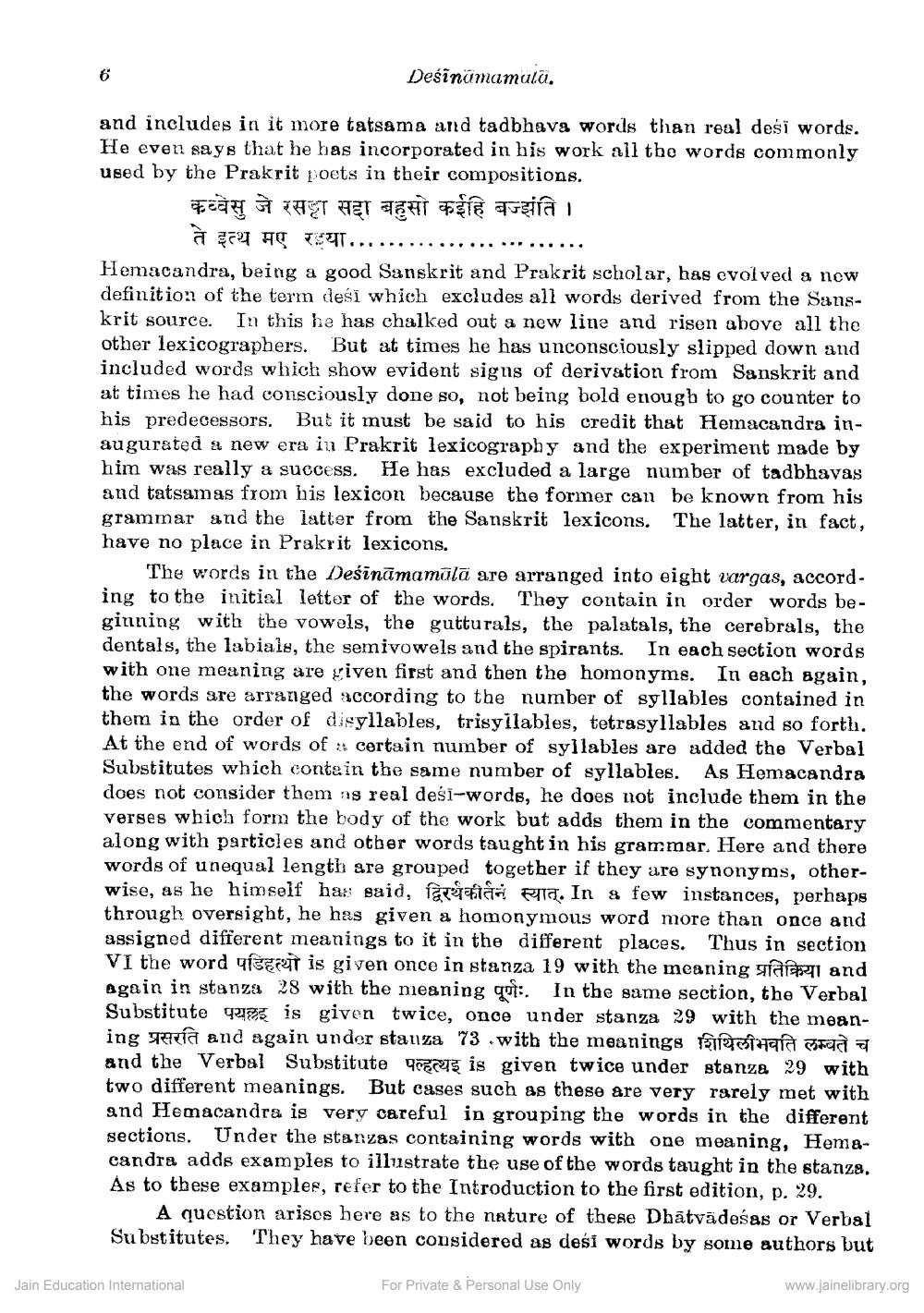________________
6
Desinamamatā.
and includes in it more tatsama and tadbhava words than real desi words, He even says that he has incorporated in his work all the words commonly used by the Prakrit poets in their compositions.
कव्येसु जे रसड़ा सद्दा बहुसो कहि बज्ांति | ते इत्थ मए रहया....
Hemacandra, being a good Sanskrit and Prakrit scholar, has evolved a new definition of the term desi which excludes all words derived from the Sangkrit source. In this he has chalked out a new line and risen above all the other lexicographers. But at times he has unconsciously slipped down and included words which show evident signs of derivation from Sanskrit and at times he had consciously done so, not being bold enough to go counter to his predecessors. But it must be said to his credit that Hemacandra inaugurated a new era in Prakrit lexicography and the experiment made by him was really a success. He has excluded a large number of tadbhavas and tatsamas from his lexicon because the former can be known from his grammar and the latter from the Sanskrit lexicons. The latter, in fact, have no place in Prakrit lexicons.
The words in the Desinämamälä are arranged into eight vargas, according to the initial letter of the words. They contain in order words beginning with the vowels, the gutturals, the palatals, the cerebrals, the dentals, the labials, the semivowels and the spirants. In each section words with one meaning are given first and then the homonyms. In each again, the words are arranged according to the number of syllables contained in them in the order of disyllables, trisyilables, totrasyllables and so forth. At the end of words of certain number of syllables are added the Verbal Substitutes which contain the same number of syllables. As Hemacandra does not consider them as real desi-words, he does not include them in the verses which form the body of the work but adds them in the commentary along with particles and other words taught in his grammar. Here and there words of unequal length are grouped together if they are synonyms, otherwise, as he himself has said, fem, In a few instances, perhaps through oversight, he has given a homonymous word more than once and assigned different meanings to it in the different places. Thus in section VI the word afegit is given once in stanza 19 with the meaning fas and again in stanza 28 with the meaning q. In the same section, the Verbal Substitute qa is given twice, once under stanza 29 with the meaning and again under stanza 73 with the meanings a mà and the Verbal Substitute is given twice under stanza 29 with two different meanings. But cases such as these are very rarely met with and Hemacandra is very careful in grouping the words in the different sections. Under the stanzas containing words with one meaning, Homacandra adds examples to illustrate the use of the words taught in the stanzs. As to these examples, refer to the Introduction to the first edition, p. 29.
Jain Education International
A question arises here as to the nature of these Dhätvädeśas or Verbal Substitutes. They have been considered as desi words by some authors but
For Private & Personal Use Only
www.jainelibrary.org




